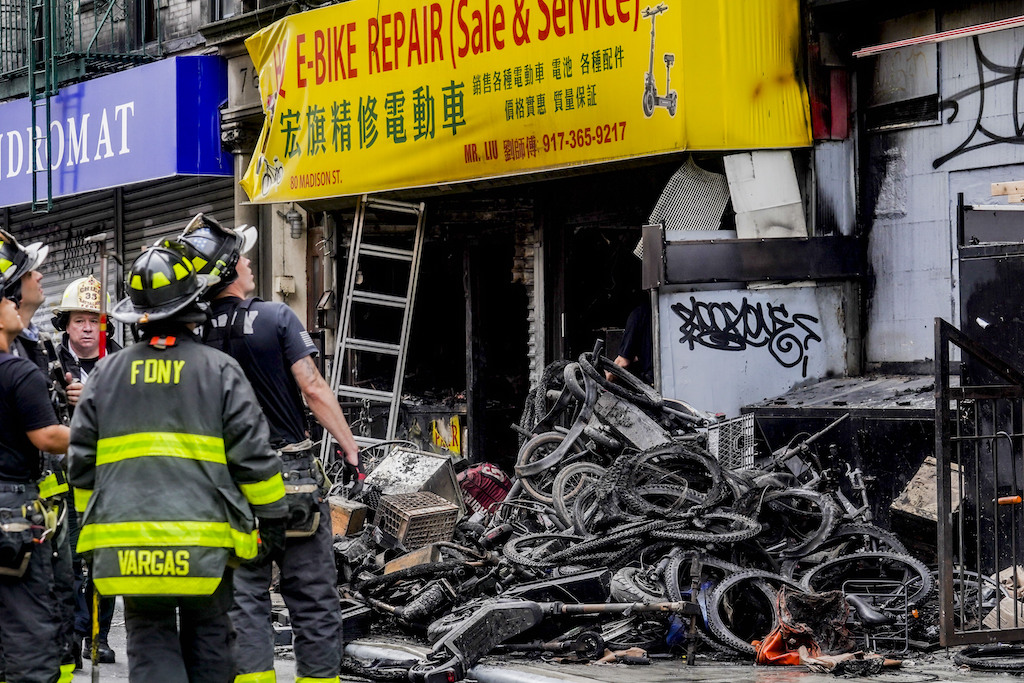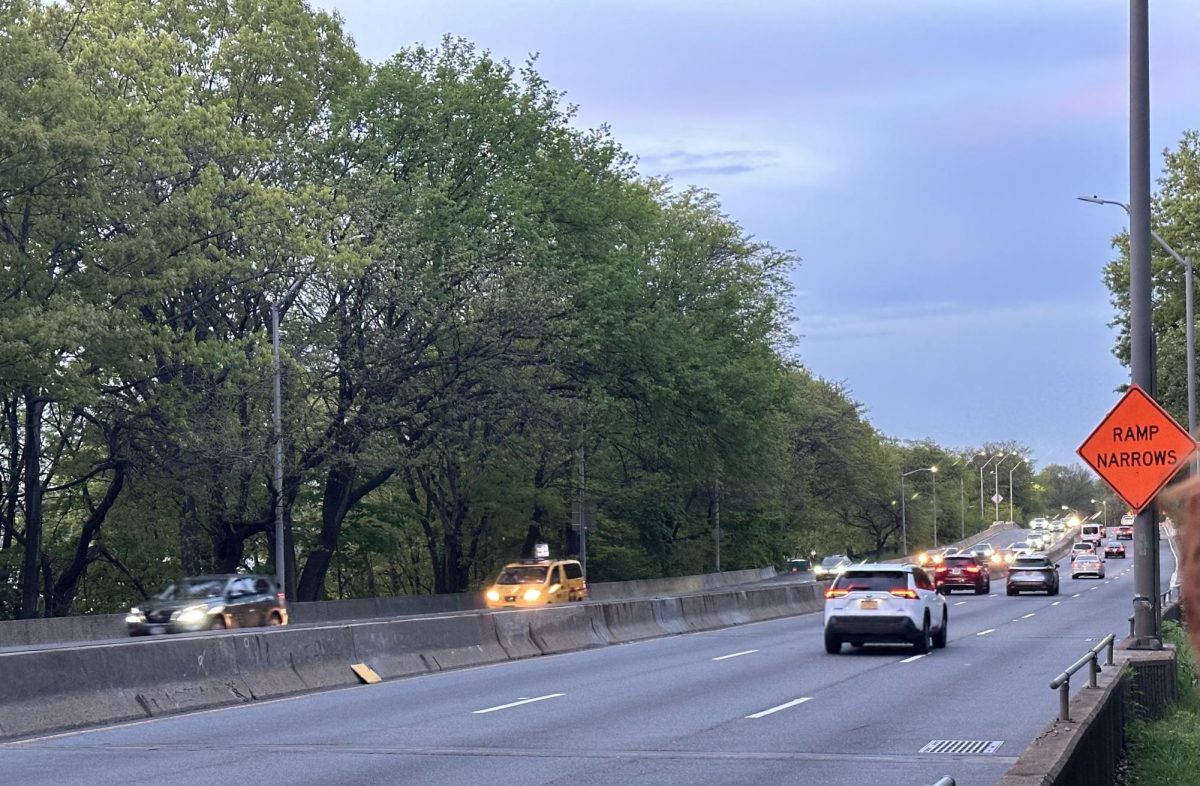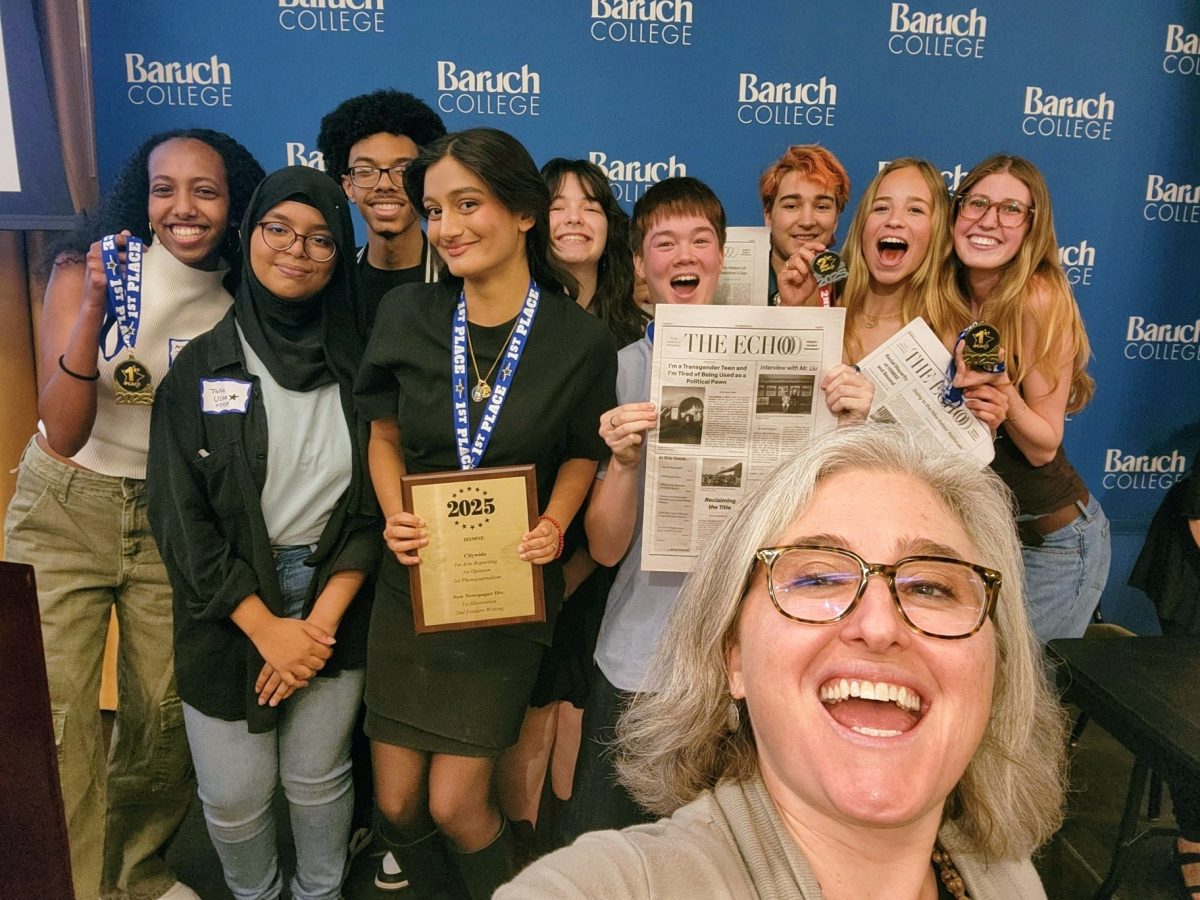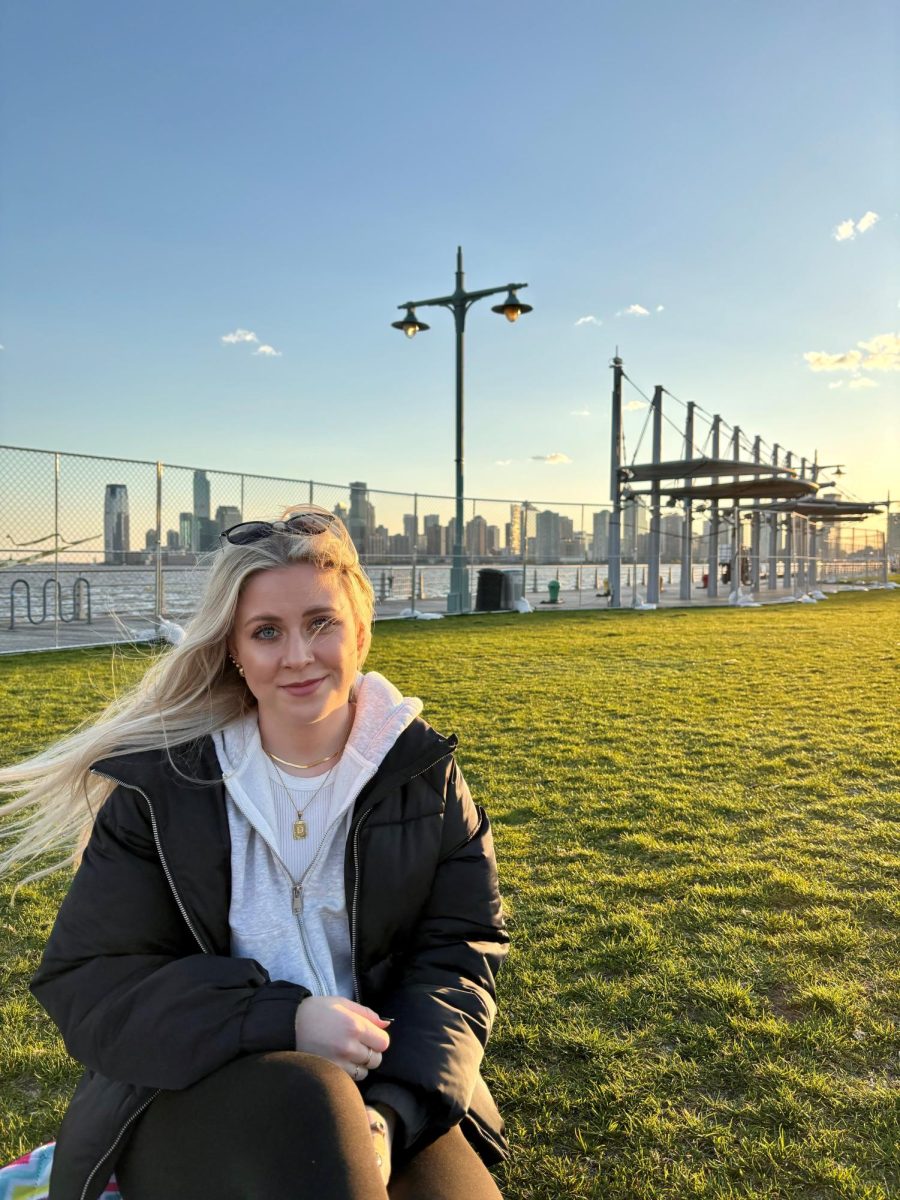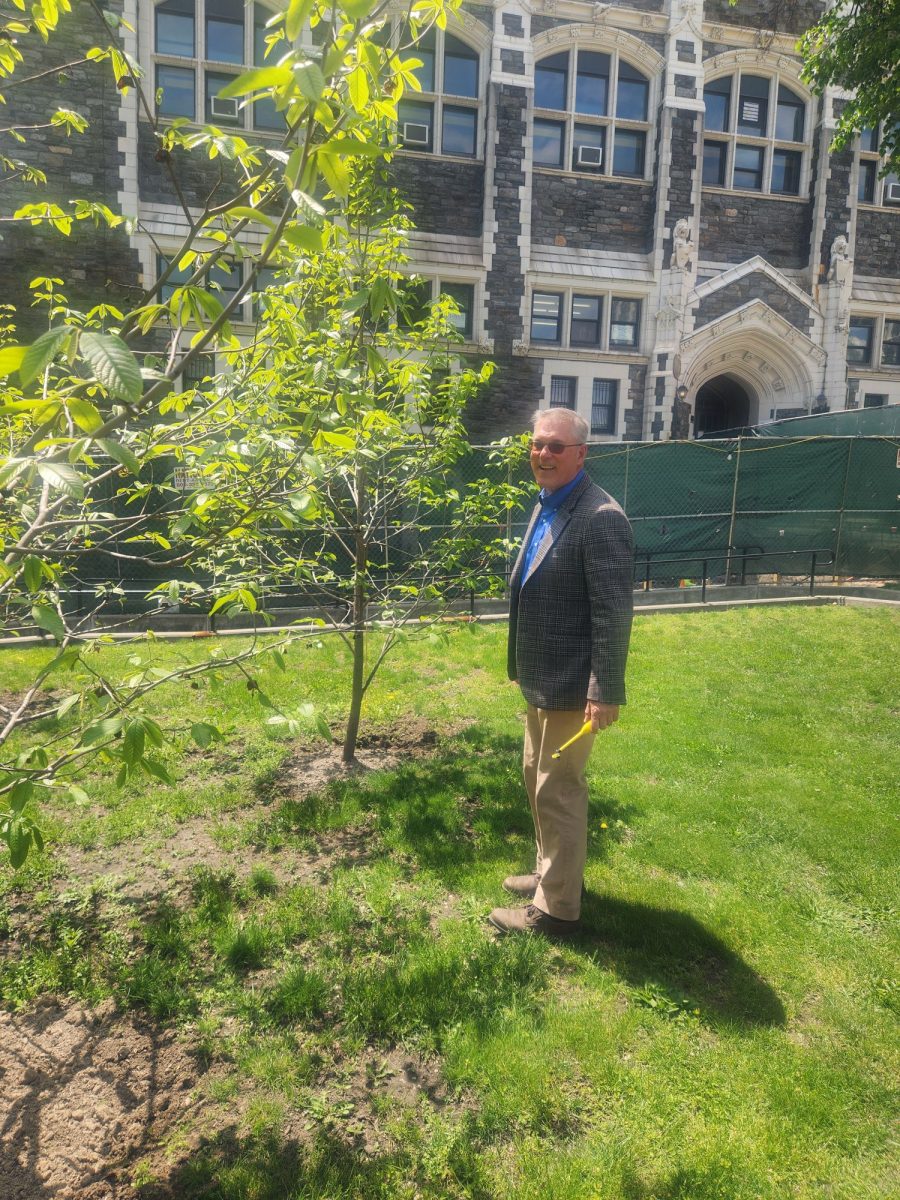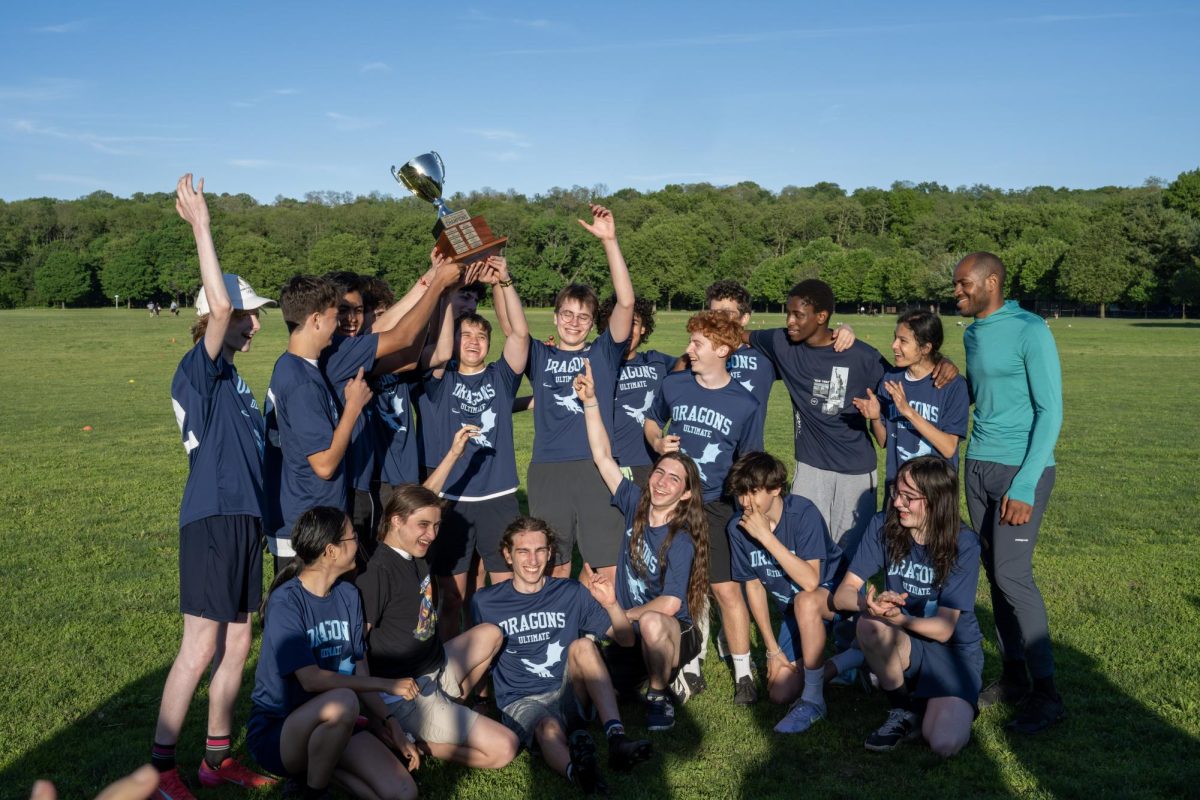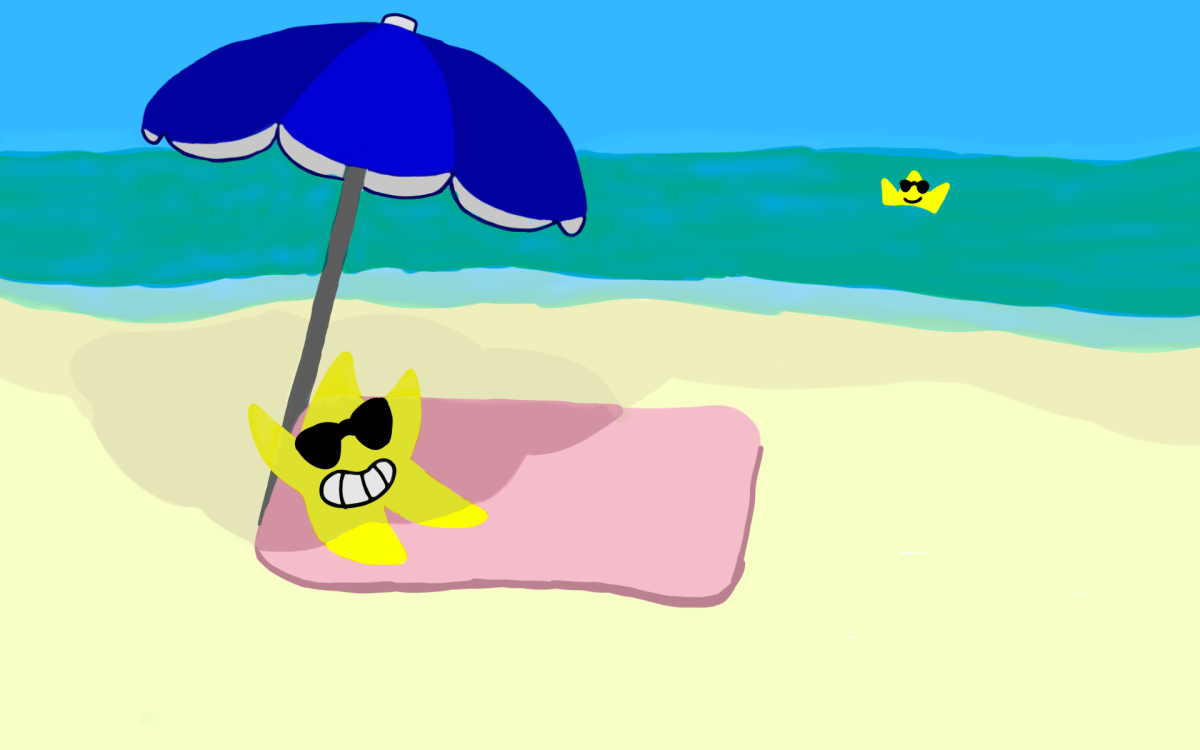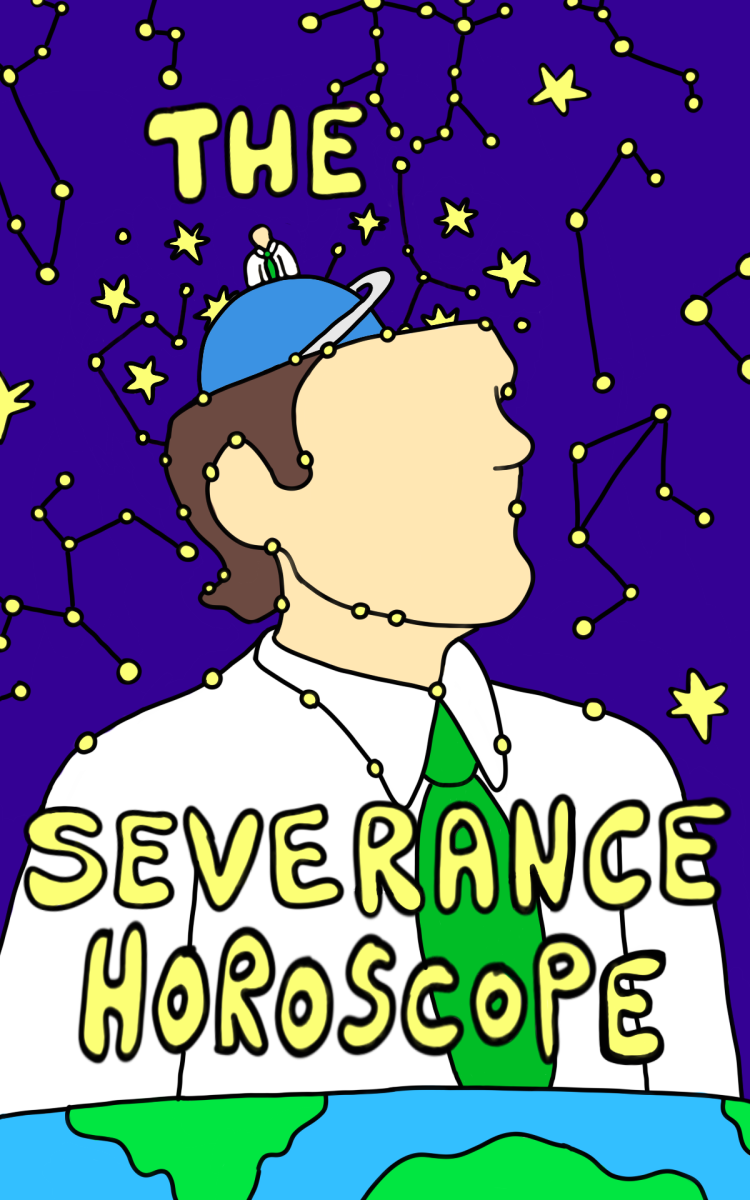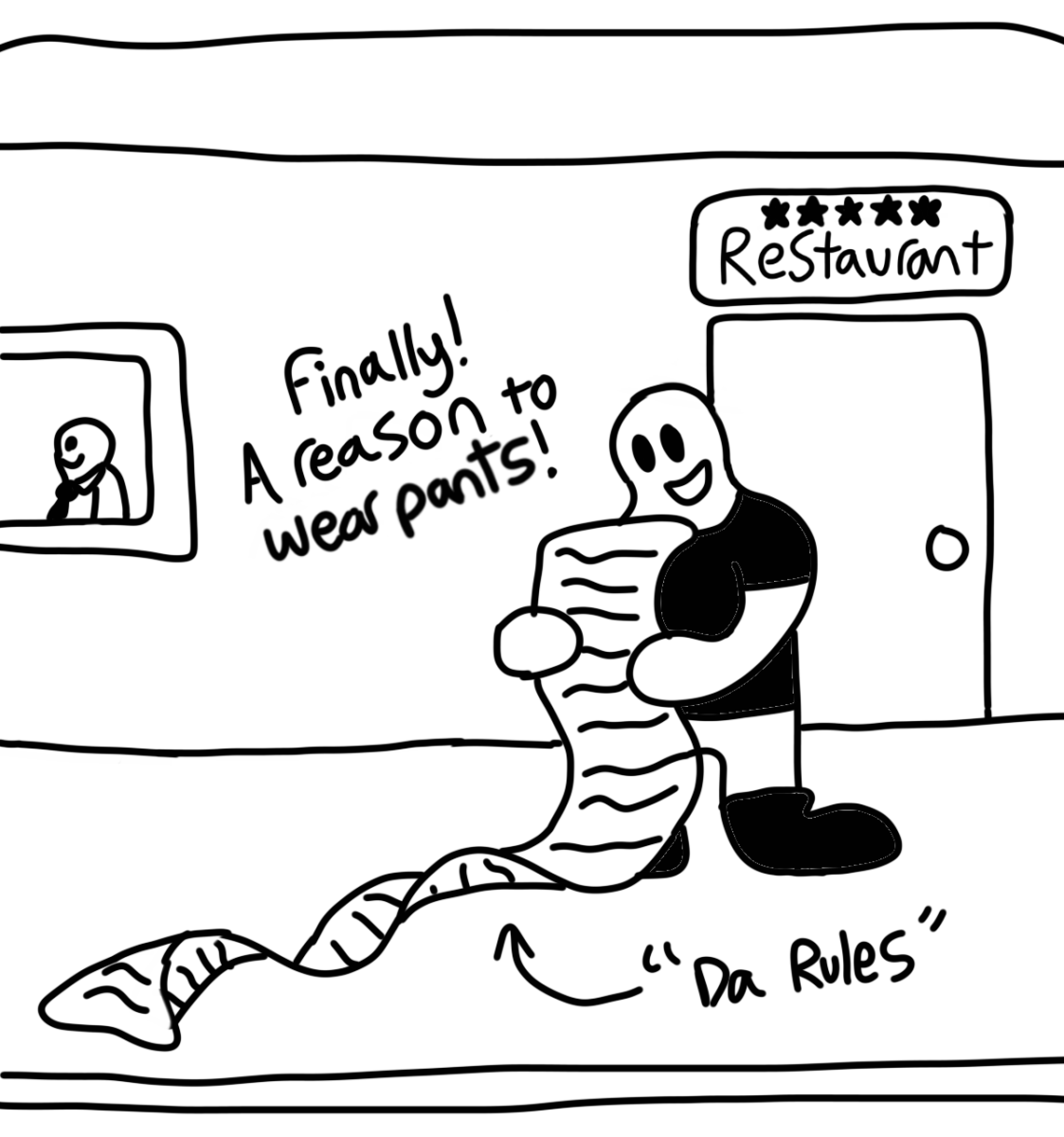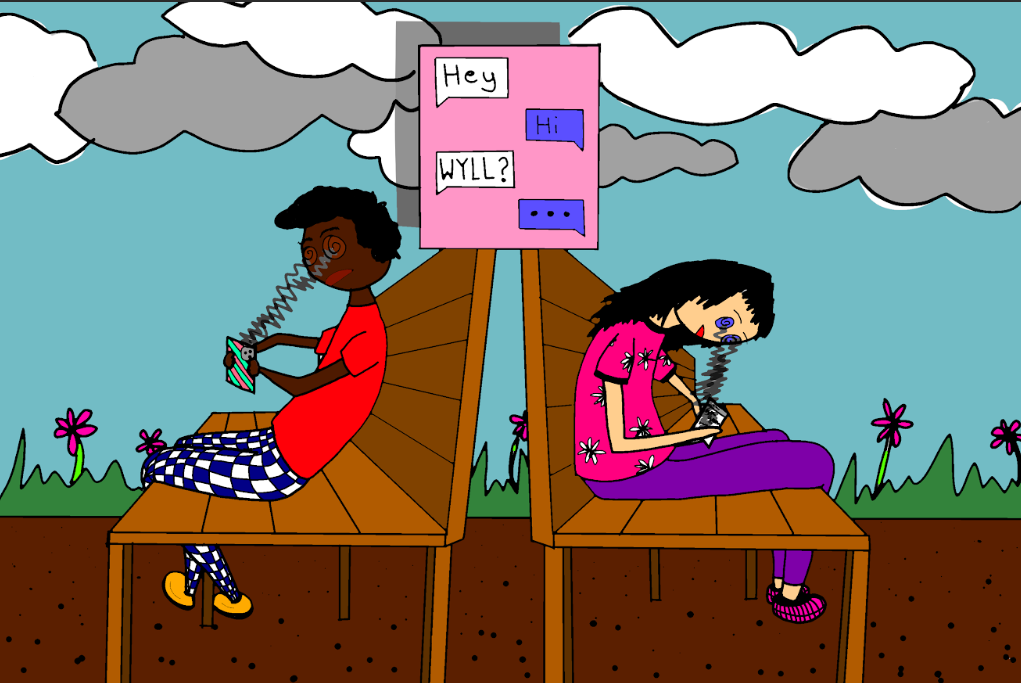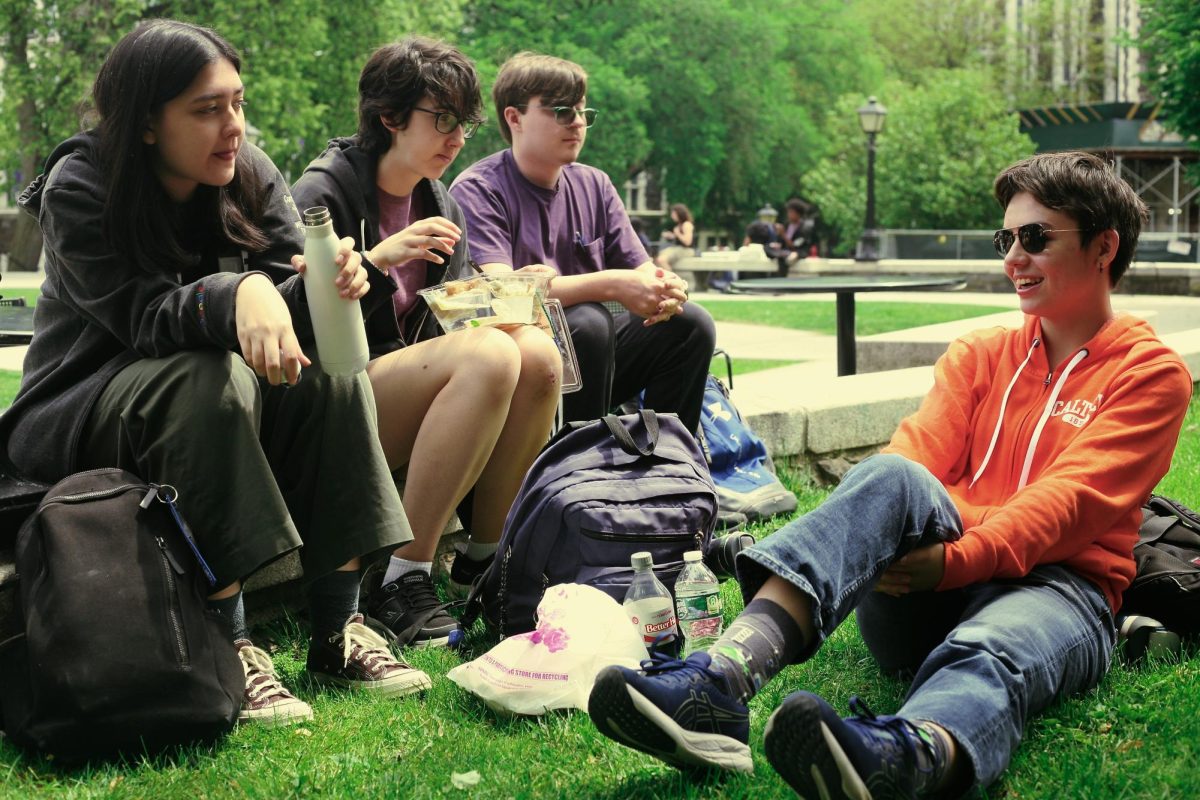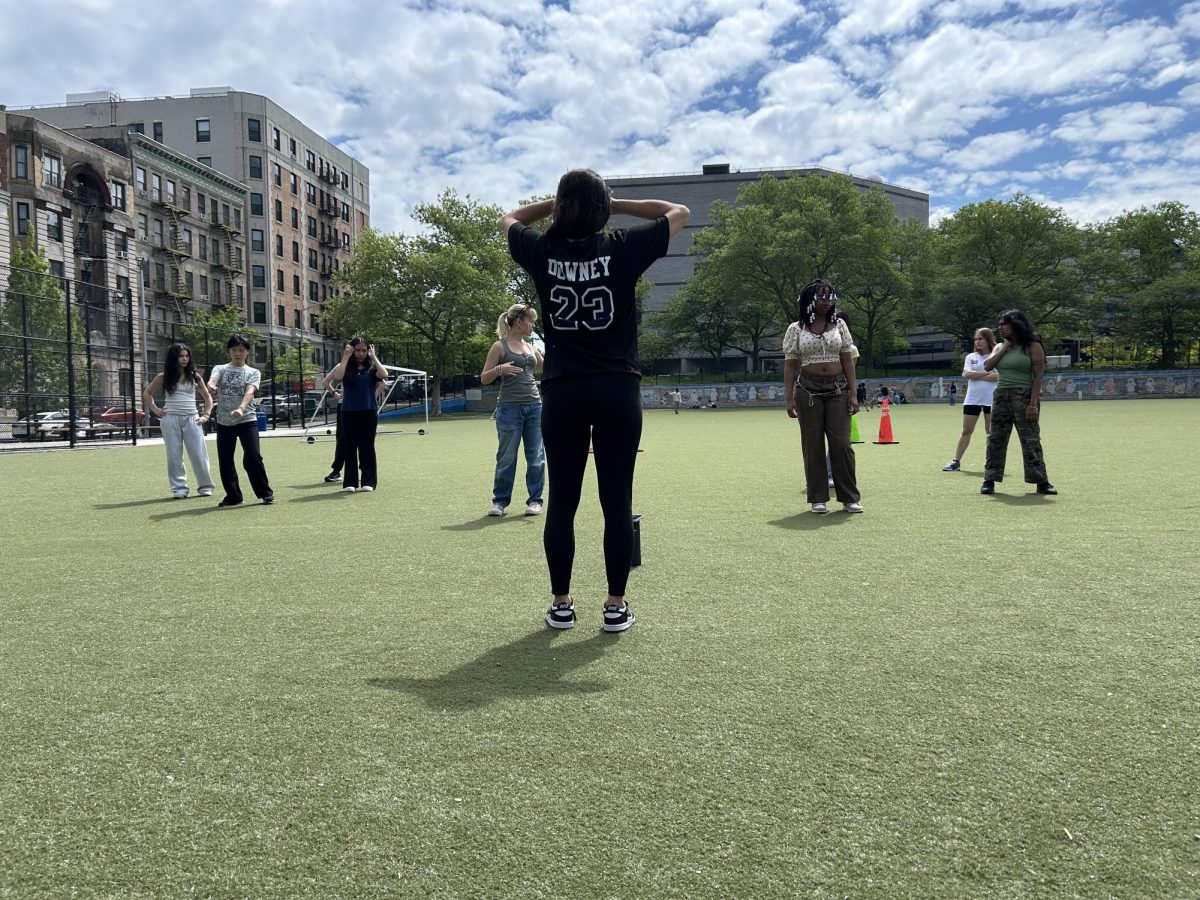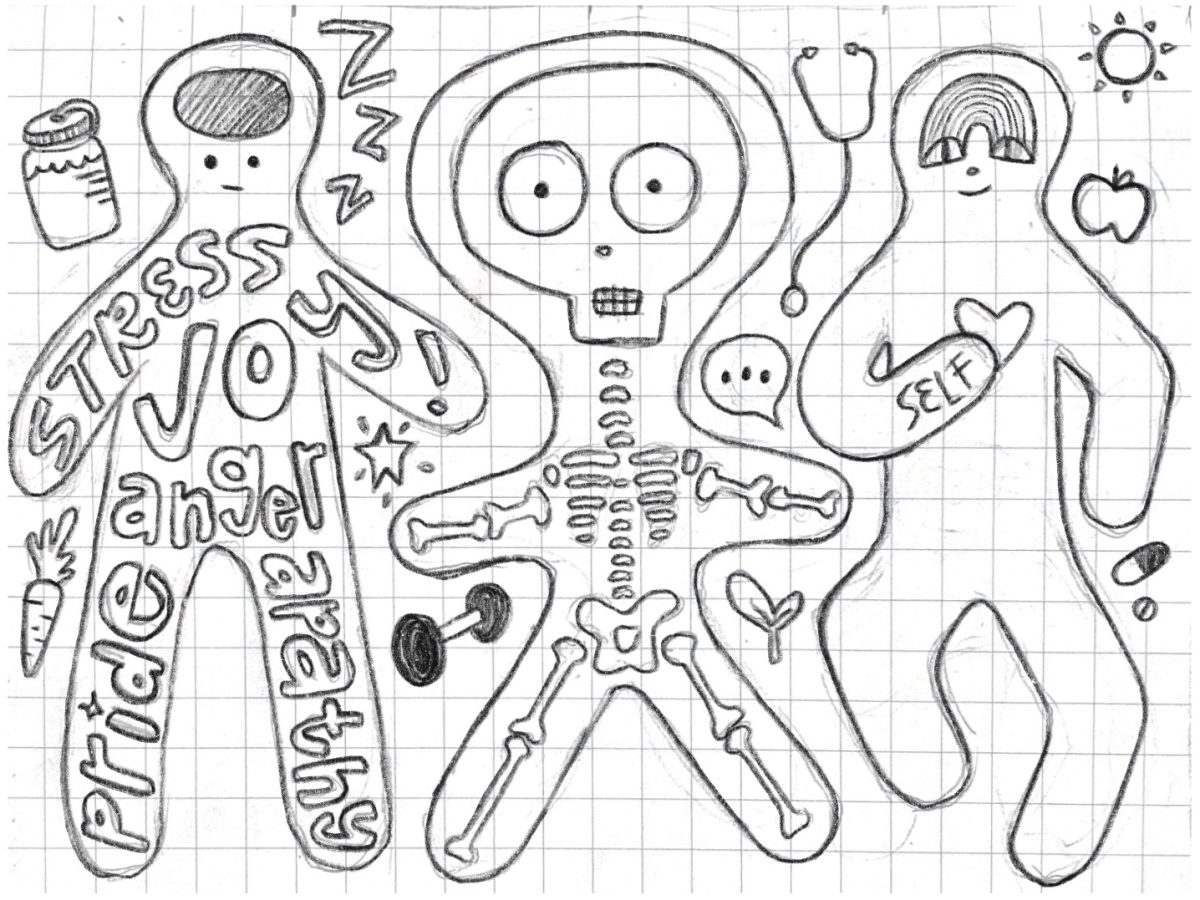Meet Ms. Rasuk, one of the newest additions to our community. Ms. Rasuk joined us this fall to teach Drafting to freshmen, Intro to Architecture to sophomores, and AP Art History to juniors and seniors. With a license in special education, Ms. Rasuk can provide support to all of her students, in whichever way they learn best. When we first started the interview, I immediately noticed her shoes: slip-sneakers emblazoned with Picasso’s Guernica painting.
When I asked Ms. Rasuk what her favorite thing about teaching at HSMSE was, her answer came easily: “I like the students, that’s the major thing. I think that you guys have a lot of energy. I like teaching someone who is appreciative of the education they are getting. That makes a huge difference.” Before coming to HSMSE, Ms. Rasuk taught at a high school in the Bronx for 11 years, and due to a lack of resources, that wasn’t always the case.
Ms. Rasuk has never taught AP Art History (although she has taught art-history at the college level), but she says it’s “a lot of fun. The kids are a little crazy, and I enjoy that.”
Before becoming a teacher, Ms. Rasuk was a full-time architect for about 15 years. Originally from the Dominican Republic, Ms. Rasuk received her bachelor’s degree in architecture from City College and her masters degree from the University of Pennsylvania.
“I’m a woman of color, so it was difficult,” Ms. Rasuk says. “People assume that just because you are an immigrant, you don’t really know what you are talking about. And on top of that, I am a woman, so it’s like, ‘who are you again?’”
Ms. Rasuk said she would encourage the girls in her class to become architects “because, the more there are, you force the industry to say something, to do something. Otherwise, if you run away from it, that adds to the problem. There was a huge Me Too movement in architecture which hasn’t been touched. And there’s a reason it hasn’t been touched. It’s because the industry is basically white men with money and a lot of influence…There’s a few of them that have been accused of abuse, sexual harassment and you name it. But they are still the head of their firm, and nothing has changed. It is because architecture is a very old industry with that hierarchy, so it’s very hard to shake it. However, if there are more of me in there, we will find a way.”
15 years into her career, Ms. Rasuk found herself at a crossroads; “around the 2010 Financial Recession, when the economy fell down, I took a break, I was a mom. I realized that I couldn’t do architecture and be a good mom. And I always say thank you for that. If it didn’t happen the way it happened, where the economy was collapsing, I would still be an architect. It gave me an opportunity, I took it, I became a teacher, and I haven’t looked back.”
But Ms. Rasuk’s love for architecture certainly hasn’t dwindled after leaving the field – it is ever-present in the classes and lessons she teaches. “Architecture is the best education you can get,” Ms. Rasuk says. “It teaches you how to see, how to research, and how to do. And if you have those three, you have the basis for everything. There is nothing you can’t do.”
In this way, Ms. Rasuk explains that architecture can be better understood as a skill set: “architecture creates plans … And as you plan, you are actually thinking, what is the best way that I can do this? What is the most efficient way that I can do this? And you have to be creative. It’s not about cutting corners. Efficient means I need to actually understand the true problem. And that’s what architecture does; outlines the problem and shows you solutions. Architecture is my first love, even before my husband (don’t tell him that) because it’s creating.”
Even before she became a full-time teacher, Ms. Rasuk always believed that “learning and teaching should be a conversation.” She says, “I’m not telling you what to do. In reality, I’m showing you certain things, and it’s up to you to come to the plate and say, I want to learn this. Once you engage in that conversation, you are going to require me to show you more… In that process, not only am I learning from you (because I am), I can see the way you see things. So I’ve always felt that’s what education is; it’s a conversation.”
When I asked Ms. Rasuk what advice she would give to her high school self, she said: “push yourself to explore everything that is at your fingertips, without making any decisions. Meaning, don’t come with a preconceived idea, this is what I want to do, therefore I’m going to explore that. No, explore everything. Explore music, art, math. And then, where do you really feel comfortable? Sometimes, actually, it is where you feel uncomfortable that you are the most successful. Like for me, I was very comfortable with anything that dealt with writing when I was in the DR. Didn’t really like math much. I was good at it but I felt, what is there after you find the pattern? Nothing. Well, that’s what I thought until I came to this country, and I started studying architecture. Because those patterns can change, and the interesting part is when they do change, to study those changes. I would say really push yourself. In a way, it is like being outside of yourself because you are exploring everything but at the same time you are questioning, do I really like this? Do I want to pursue this? Do I want to do this? And then, you make a decision.”
Ms. Rasuk’s passion for architecture is infectious. We are beyond lucky to have teachers like her, who have experience in the field and are excited to share their experiences, lessons, and insights with us.






